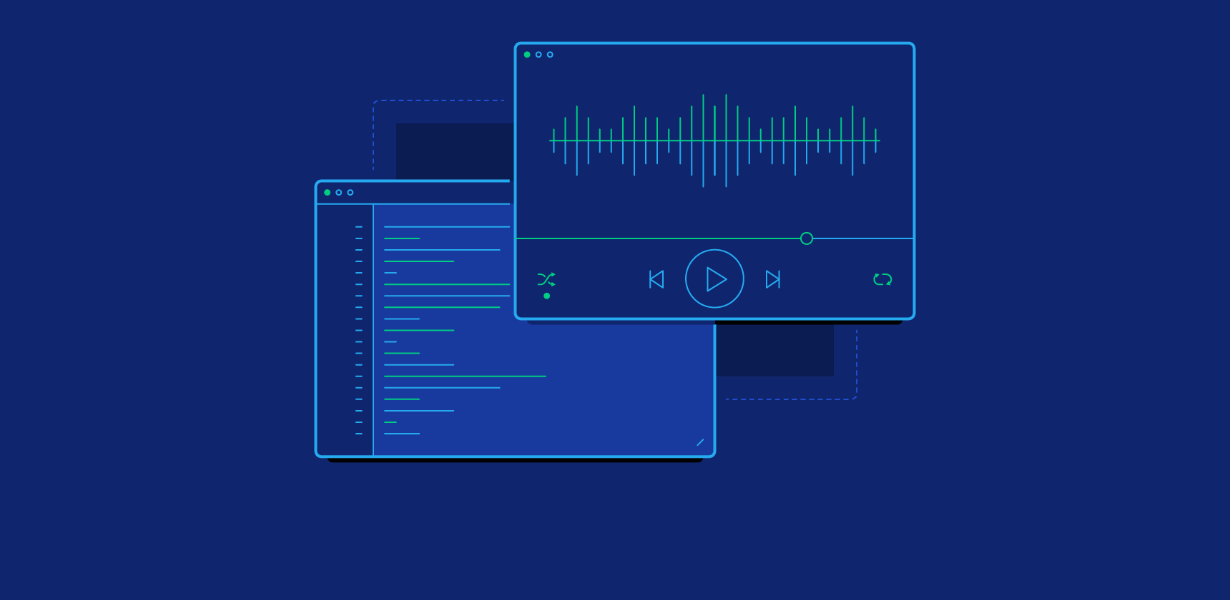
Revolutionizing Web Audio: Unveiling Real-Time Spatial Audio Rendering with Web Audio API
- Post
- August 8, 2023
- Web APIs, Web Audio API, Web Technologies
- 0 Comments
In the realm of web development, the Web Audio API has emerged as a groundbreaking innovation, reshaping the way we experience audio on the internet. This comprehensive guide will delve into the realm of real-time spatial audio rendering using the Web Audio API, shedding light on its functionalities, benefits, and implications.
Understanding the Web Audio API
The Web Audio API, often abbreviated as WAA, is a JavaScript interface that empowers developers to create and manipulate audio content within web applications. This versatile tool unlocks a myriad of possibilities, allowing for the seamless integration of audio elements that can enhance user experiences.
One of the central features of the Web Audio API is its ability to generate, process, and synchronize audio streams in real-time, offering developers unparalleled control over audio data. This control extends to various aspects like audio routing, filtering, and spatialization.
The Evolution of Web Audio: From Stereo to Spatial
Traditionally, web audio was limited to stereo playback – a two-dimensional soundscape that could not truly emulate the intricacies of real-world audio environments. However, the Web Audio API has evolved to address this limitation by introducing spatial audio rendering. This advancement introduces the concept of three-dimensional audio, where sounds are perceived as coming from specific directions and distances.
Unveiling Real-Time Spatial Audio Rendering
Real-time spatial audio rendering involves creating an immersive auditory experience where sounds are positioned in a virtual space around the listener. The Web Audio API achieves this by leveraging techniques like HRTF (Head-Related Transfer Function) to simulate the way our ears perceive sounds in the real world.
Through the API’s AudioContext, developers can position audio sources and manipulate their spatial attributes, including location, orientation, and distance. This enables the creation of captivating 3D audio environments that can enhance storytelling, gaming, and interactive applications.
Implementing Spatial Audio: Key Considerations
To harness the power of real-time spatial audio rendering, several key considerations come into play:
Audio Source Placement
Proper positioning of audio sources is crucial for creating a convincing spatial audio experience. Developers can specify the 3D coordinates of audio sources, ensuring they are accurately located within the virtual environment.
Listener Perspective
The Web Audio API enables developers to define the listener’s position and orientation within the virtual space. This perspective affects how audio sources are perceived, adding depth and realism to the auditory experience.
Distance and Attenuation
Real-world audio behaves differently based on distance. The API allows for the simulation of distance-based attenuation, making audio sources quieter as they move away from the listener.
Cross-Browser Compatibility
While the Web Audio API offers immense capabilities, ensuring cross-browser compatibility is essential. Developers may need to implement fallback options for browsers that do not fully support spatial audio features.
The Impact on User Experiences
The integration of real-time spatial audio into web applications has far-reaching implications for user experiences. Consider the following:
Immersive Gaming
Spatial audio enhances gaming environments by providing players with auditory cues that match their visual surroundings. This can significantly improve gameplay, making virtual worlds more immersive and interactive.
Virtual Reality (VR) and Augmented Reality (AR)
Realistic spatial audio is crucial for creating convincing VR and AR experiences. The API’s capabilities can heighten the sense of presence in virtual environments, making them feel more lifelike.
Interactive Storytelling
Incorporating spatial audio into multimedia content enriches storytelling by allowing creators to guide the audience’s attention through sound. This can lead to more engaging and emotionally resonant narratives.
Architectural and Design Visualization
Real-time spatial audio rendering finds applications beyond entertainment. It can be utilized in architectural and design applications to simulate how sound interacts within physical spaces.
Commonly Asked Questions
Q1: What is the Web Audio API?
The Web Audio API is a JavaScript interface that enables developers to create, manipulate, and integrate audio content into web applications in real time.
Q2: How does spatial audio work?
Spatial audio simulates the way humans perceive sound in three-dimensional space, enhancing immersion by placing audio sources around the listener.
Q3: What is HRTF?
HRTF stands for Head-Related Transfer Function. It’s a crucial technique used in spatial audio to replicate the way our ears process sound based on direction and distance.
Q4: Can spatial audio work on all browsers?
While the Web Audio API offers spatial audio capabilities, cross-browser compatibility may vary. Developers might need to implement fallback solutions for non-compatible browsers.
Q5: What are the practical applications of spatial audio?
Spatial audio enhances gaming, virtual reality experiences, interactive storytelling, and even architectural visualization by providing a more immersive and engaging auditory experience.
Final Words
The emergence of real-time spatial audio rendering through the Web Audio API marks a significant milestone in web development. This technology unlocks a new dimension of user engagement, enabling immersive gaming experiences, lifelike virtual reality environments, and captivating interactive narratives. By harnessing the power of real-time spatial audio, developers have the opportunity to revolutionize how we perceive and interact with audio content on the web.




